In: women
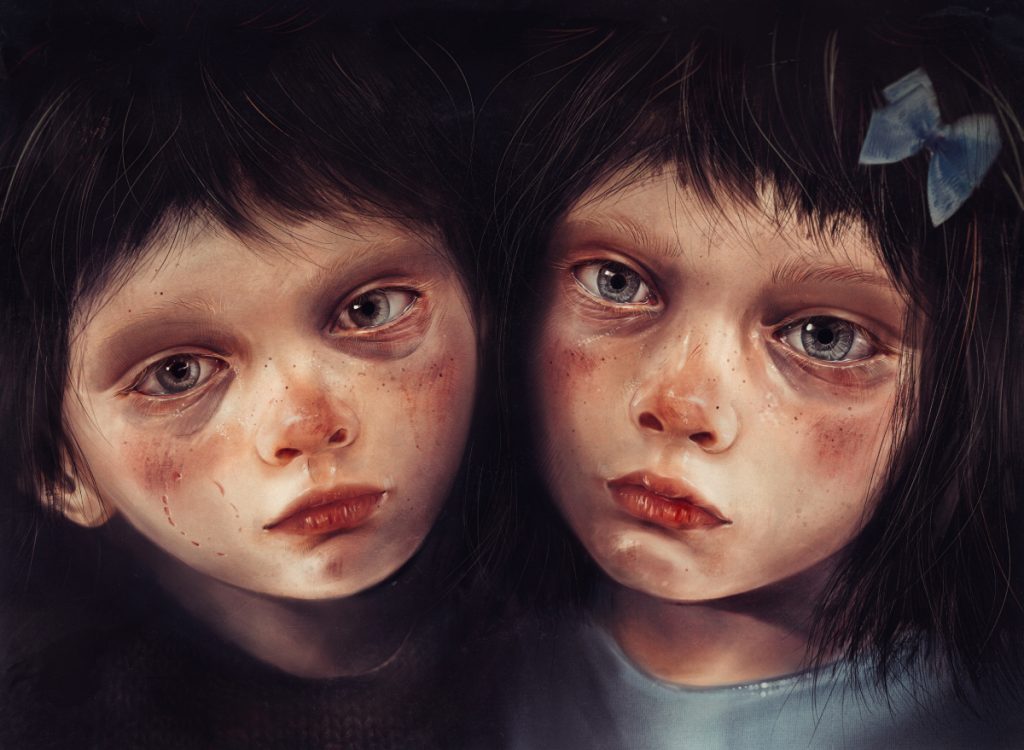
The Mark – Olga Volgina
August 24, 2021One of Olga Volgina’s more recent works that she’s shared on social media (as she’s a prolific artist) is a work that resonates in both an immediate and historical manner. Any (well made and meaningful) rendering of children has this power. Volgina’s children evoke a multiplicity of intersecting references: Goya’s portrait of Manuel Osorio Manrique de Zúñiga, who looks doll – like and innocent until a closer examination reveals several cats waiting to devour his pet bird, to the child’s indifference, is one. Delving even deeper into the worn faces and unflinching gaze of the children, I’m also reminded of Robertson Davies’ book World of Wonders. In response to one character relating his harsh yet essential childhood experiences, another defers that though he has experience “exploring evil” through his films, the evil of children is something that requires courage he lacks….
Volgina’s children must also bring to mind Ignorance and Want, from Dickens’ A Christmas Carol, and in that instance offer a more disturbing consideration of how a child is perhaps a larger reflection (or repository) for the world in which they live. Volgina commented that when this work – titled The Mark – was finished, “now I look at them and they look at me”, but what they see, or what they think, is opaque to us. We can guess; but the children in The Mark are silent and staring, offering no answers. Perhaps they’re indifferent to us, perhaps demanding, or perhaps simply exhausted and bruised.
Volgina lives and works in St. Petersburg, Russia. Her digital portraits, as she describes them, are both a bit unsettling and insightful. This brings to mind how sitting for some artists requires a degree of courage (never mind being nude but what of the deeper self that the artist might excavate and present for the world to see?).
See more of Olga Volgina’s work on Instagram, FB and at Etsy, where she and her twin sister, Liza Volgina, have a variety of engaging works on display. ~ Bart Gazzola
Read More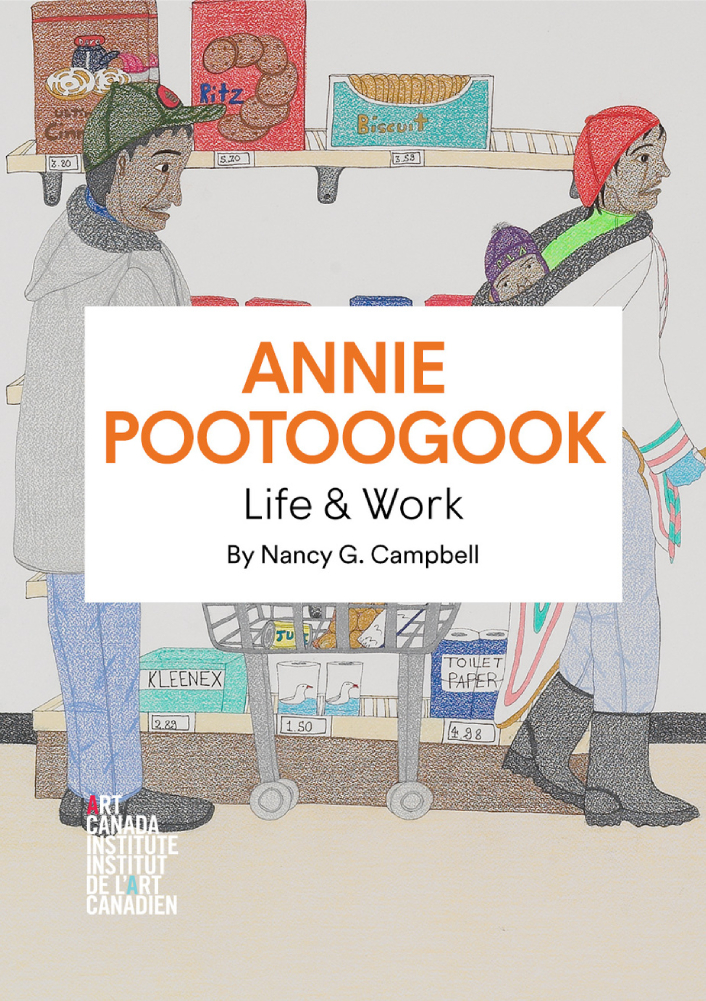
Annie Pootoogook | Life & Work
September 30, 2021Annie Pootoogook | Life & Work by Nancy G. Campbell
The Art Canada Institute has produced a number of fine books (all readily available at their site) on various artists that have informed and challenged the larger Canadian art world.
Nancy G. Campbell’s “Annie Pootoogook: Life & Work traces the artist’s life from her youth at the West Baffin Eskimo Co-operative’s Kinngait Studios, where she began drawing in 1997, predominantly in ink and crayon, to her death in 2016. The book explores how in addition to depicting scenes of everyday life in the North—including people watching TV, playing cards, shopping, or cooking dinner—Pootoogook depicted such subjects as alcoholism, domestic abuse, food scarcity, and the effects of intergenerational trauma.”
There is a certain bluntness and brutality, at times, to Pootoogook’s scenes. Campbell’s engaging but also rigorous examination of Pootoogook’s life and work (as they were, frankly, one and the same) explores how “the life of Annie Pootoogook (1969–2016) tells an important national story, and her career marks a pivotal shift in the national consciousness around contemporary Inuit art. With a keen eye for detail and fearlessness in representing daily life—the celebratory, the frightening, and the mundane—she captured the attention of Southern audiences. Although imported culture and technologies have dramatically changed Inuit life, the North has also stayed true to tradition: community, food, and language remain sources of Inuit pride. In her drawings, Annie depicted what is still valued and unique in her culture and what is changing rapidly. She had a meteoric rise in the art world that was tragically cut short when she died in 2016.”
I encountered Pootoogook’s work at the Mendel Art Gallery (now the Remai Modern) in Saskatoon in 2009. The simplicity and directness – the truth, both celebratory and unsettling – of her images resonated in that place. From the legacy of residential schools that dotted the prairies, to the Saskatoon police’s starlight tours, to the ongoing shameful dismissal of murdered and missing Indigenous women, Pootoogook – though from Cape Dorset – was very loud, in Saskatchewan, and even posthumously has a power to disrupt our assumptions and ignorance.
Annie Pootoogook: Life & Works, a publication from The Art Canada Institute, can be read here.
More about Pootoogook can be read here.
Read More

Forest for the Trees – Rita Leistner
September 16, 2021Rita Leistner
Forest for the Trees
Dewi Lewis Publishing
Rita Leistner’s latest, Forest for the Trees, is a feature documentary film and a book (published by Dewi Lewis UK), based on Rita’s fine art series The Tree Planters and Enchanted Forests, represented by the Stephen Bulger Gallery.
Rita is an award-winning multi-media artist and documentary filmmaker with a history of using photography and film to create portraits of communities in extreme conditions —such as soldiers in Iraq, female patients at psychiatric hospitals in wartime, and women wrestlers in the United States — exploring themes of purpose, struggle, and belonging.
Forest for the Trees is the story of the vast landscape of clear-cut logging and reforestation as experienced from a community of a hundred tree planters, tree planting by hand in remote locations in Canada.
Planting trees one at a time is the overarching metaphor of how we can achieve things we think are impossible: reforesting the earth one tree at a time, getting through life’s challenges one day at a time, and making a film one picture at a time.
www.forestforthetreesdocumentary.com
This recommendation appeared in the Fall 2021 – ECO ISSUE of PhotoED Magazine. If you’re looking for more Canadian photography inspiration check out PhotoED Magazine, in print + online https://www.photoed.ca
~ Rita Godlevskis
Read More
Interview with Julia Huỳnh
November 3, 2021Touching on topics such as the family archive, destruction of the self-portrait, consent and authorship in photography, and more, Guest Curator Julie Dring interviews Toronto-based archivist and photographer Julia Huỳnh. Click for more!
Read More
Fire Caught and Portrait of an Artist (Franklin Ugochukwu) – Kary Janousek
September 7, 2021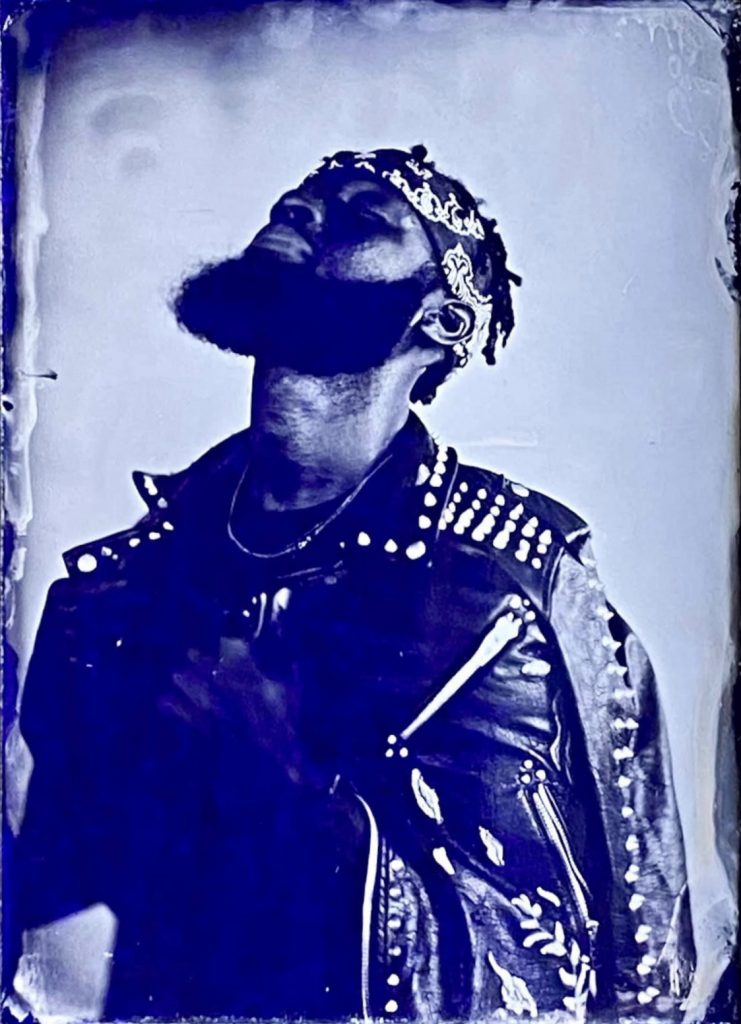
There is an ethereal look to wet plate collodion photography that is difficult to describe. It’s no wonder that people thought that early photography was a method to steal the soul of the sitter; as you can recognize the individual, but they look detached, disconnected. The camera seems to catch something more than just the image of the person… it catches their essence.
The reason for this is that these images are primarily formed by collecting the UV light radiating from the subject, a light that is invisible to the naked eye. Kary Janousek (one of 4 of the “Dakota Revivalist Photographers” using wet plate collodion in North Dakota) uses this effect to beautiful ends. Fire Caught and Portrait of an Artist (Franklin Ugochukwu) are perfect examples of the process. Many of Kary’s images have spiritual undertones that are served well by the detachment. The images are of flesh and blood seem to transcend the glass plates they are formed on.
Based in Fargo, North Dakota, Kary is likely one of the only wet plate photographers ANYWHERE with a store front enterprise… walk in to her incredible studio in the historic center of town and you can have a plate made on the spot! Recently she has started experimenting with different types of glass, creating completely unique works of art.
You can find Kary Janousek at https://highhatportraiture.com and on IG @highhatportraiture
Shane Balkowitsch is another of the Dakota Revivalist Photographers and has been previously featured on curated.
~ Mark Walton
Read More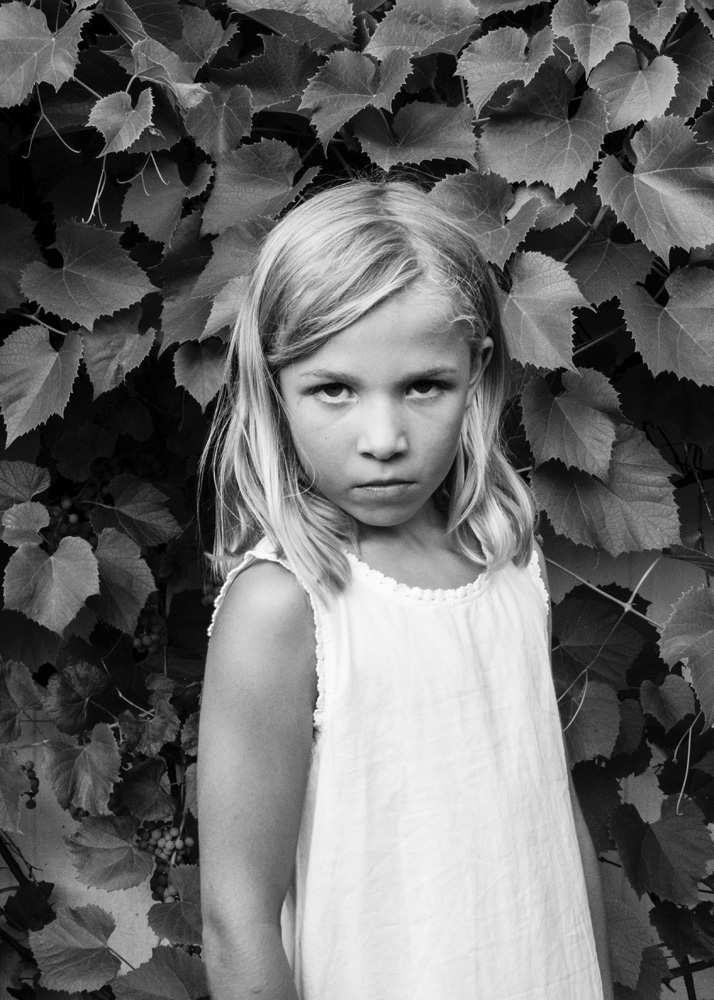
Untitled – Jennifer King
August 29, 2021Jennifer King’s photography has always intrigued me, so much so that I put this photo of hers (above) on the front cover of the first edition of foto:RE|VIEW magazine in 2019. Her work seemed to capture a certain type of childhood perfectly… all its innocence and curiosity, along with its foibles and anxieties.
Jennifer had always taken photographs but found a stronger connection with the medium after the birth of her first child. “The camera became a tool that allowed me to respond to and embrace a new identity that included motherhood. It also became a way for me to discover who my children were.”
King excels at capturing those minute, physical clues that reflect one’s emotional state: a hooded brow, the quiver of a lip, a flash of exasperation, unbridled energy brought on by wonder and adventure.
You can read more about Jennifer’s work with her children in the article BECOMING, found here at foto:RE. You follow her @jencking and contact her HERE. ~ Mark Walton
Read More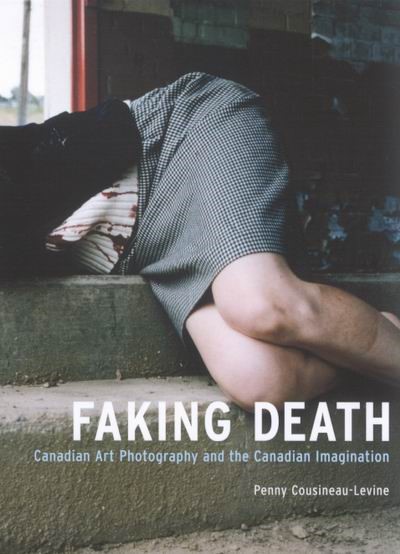
Faking Death
July 24, 2021Penny Cousineau-Levine
Faking Death
Canadian Art Photography and the Canadian Imagination
McGill-Queen’s University Press
Penny Cousineau-Levine’s “Faking Death” is considered by many to come closest to defining the characteristics of “Canadian” art; specifically the photographic arts but her conclusions can be applied to visual, performing and literary arts as well. She posits that the photographs she used for her study (all artistic photos by a select group of artists taken between 1950 and the 1990’s) are rarely about the referent… as she puts it, “a pipe in Canadian photography isn’t usually a pipe. It’s probably a crucifix”. This “dislocation” is at odds with straight American documentary photography, where the “truth” of the image is its most important characteristic.
The book, although academic in tone (indeed it was written in an attempt to describe to her university students the notion of a Canadian tradition of art), is a captivating read and draws many more fascinating conclusions. Once enlightened by her observations, you can’t help but see the characteristics she lays out in almost every piece of Canadian work.
This book is a MUST read for all Canadian artists and art lovers. It is available at McGill-Queen’s University Press. ~ Mark Walton
Read More
Down the Old Bog Road: Frances Crossan Blanchard
October 14, 2021Our first Guest Curator Kim Fahner writes about the work of her friend Frances Blanchard. “When you stay in O’Neill Cottage, you see Frances sitting in front of you, but then can feel and sense a group of ancestors standing all around her, thanking her for bringing that homestead back to life. Her paintings, then, are full of details that conjure up stories of her family and the land they lived on.” Click for more!
Read More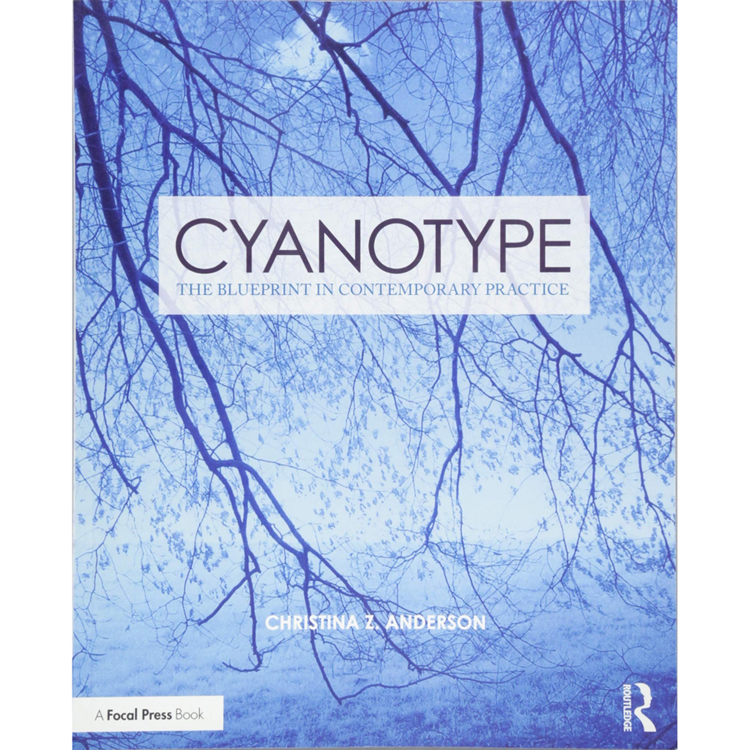
Christina Z. Anderson – Cyanotype: The Blueprint in Contemporary Practice
June 25, 2021Christina Z. Anderson
Cyanotype: The Blueprint in Contemporary Practice
A Focal Press Book, Routledge
Cyanotype: The Blueprint in Contemporary Practice is THE book you need if you want to learn how to create stunning cyanotype prints. Written by Christina Z. Anderson and available online, it offers detailed notes on formulas, papers, digital negatives and the actual process itself, as well as highlighting the work of contemporary cyanotype artists. Anderson is also the author of similar books on gum prints and salted paper prints. I’ve included 2 of my test images using her processes below. ~ Mark Walton
Read More
Liz Potter – Everything is going to be okay
September 22, 2021Liz Potter’s series of panoramic self-portraits should be viewed while listening to an Aaron Copland playlist. Like the great American composer, Potter captures the expansiveness of the American frontier, or what’s left of it. She pits her everyman heroine against its searing heat, its beautiful skies and its unforgiving majesty. Small and alone, she confronts it with courage and humility, and does not fear failure or setbacks.
Read More
Recent Comments